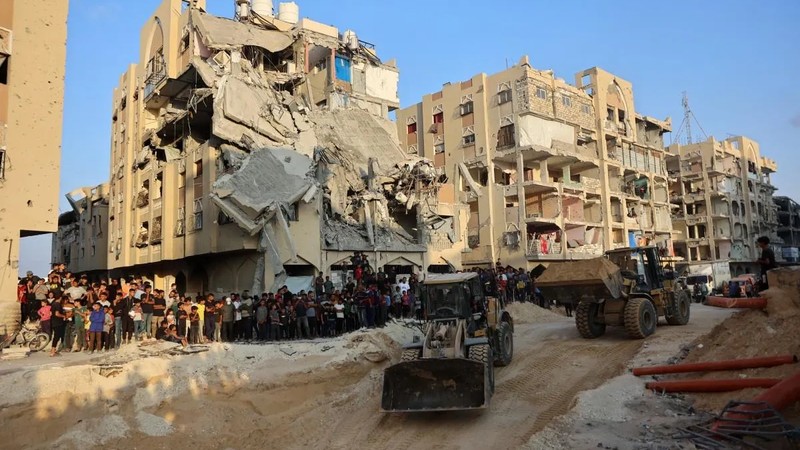How much and how long will it take to rebuild Gaza?
After two years of war, genocide and attacks, Hamas and Israel have agreed to the first phase of a ceasefire in Gaza earlier this month – but there is a lot to happen before it is safe and Palestinians can move back into their homes.
According to the United Nations development experts, around $70 billion will be needed to reconstruct Gaza and make it safe after two years of war. In addition to that staggering number, aid agencies reported that far too little aid continues to reach desperate Palestinians.
Few places in Gaza have been left unscathed by constant Israeli bombardment before the latest temporary ceasefire came into effect.
According to the UN Development Programme (UNDP)’s Jaco Cilliers, Special Representative of the Administrator for the programme of assistance to the Palestinian People destruction across the enclave “is now in the region of 84 per cent. In certain parts of Gaza, like in Gaza City, it’s even up to 92 per cent.”
Cilliers highlighted the findings of the latest Interim Rapid Damage and Needs Assessment (IRDNA) on Gaza by the UN, the European Union and the World Bank, which estimated the damage at $70 billion.
Furthermore, approximately $20 billion will be required in the next three years alone.
Cilliers pointed to “very good indications” from potential donors in support of reconstruction from Arab States, but also from European nations and the United States.
In the meantime, needs in Gaza increase as more than 300,000 Palestinians have been heading north to Gaza City since Friday, as the ceasefire agreement appeared to kick in.
The Israeli authorities have agreed to allow 190,000 tonnes of relief supplies into Gaza, and UN agencies and their partners are scaling up operations rapidly, but a far greater amount of aid is needed urgently, humanitarian agencies, including the UN aid office, OCHA, have said repeatedly.
While the cost of reconstruction is a lot, the projected timeline for comprehensive rebuilding is a dire reflection of the damage.
The rebuilding of Gaza’s housing could reportedly take decades.
Based on past reconstruction, if the rebuilding process follows the models used after the Israeli bombings in 2014 and 2021, reconstruction of housing will take 80 years.
However, if there is “good planning,” the process could take less time than 80 years.
To rebuild effectively and quickly, several big policy and practical changes need to happen.
First, Israel needs to ease its restrictions on construction materials. In the past, reconstruction was delayed because key building supplies like cement and steel were classified as “dual-use,” meaning they could also be used for military purposes. Allowing more of these materials in would make it possible to rebuild homes and infrastructure faster.
Second, Gaza needs better ways to bring in these materials. Relying only on trucks through border crossings isn’t enough for the huge volume required. Building a deep-water port would make it possible to bring in thousands of containers at once, speeding up the process dramatically.
Third, the rubble and debris from the war must be cleared before rebuilding starts. There are more than 60 million tonnes of debris, and some of it contains unexploded bombs and human remains. Clearing this safely is essential—not just for building, but also for reviving farming. Once cleared, some of the debris can be recycled for use in new construction.
Finally, proper planning is needed to make rebuilding faster and more efficient. This means designing temporary camps that can become permanent neighbourhoods, restoring water, electricity and sanitation services, and supporting people to return to their homes. With these shifts and careful strategy, the reconstruction timeline could be shortened significantly from the current estimate of 80 years.
IOL

